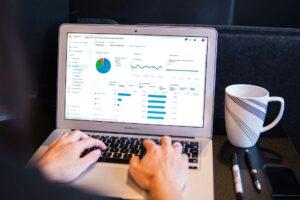Introduction to Data Analysis Tools
According to the latest estimates, 328.77 million terabytes of data are created each day. To use the data available in this vast sea in an adept manner is the distinguishing factor that determines outcomes in the competitive market. To infer crucial insights that aid in decision-making, the art of analyzing the data is important. This is where data analysis tools come into the picture. Due to the vastness of the data in this age, traditional processes that included manual assessments are no longer feasible.
These aforementioned tools are powerful enough to collect, process, and analyze the data in a manner that unveils patterns, trends, and relationships that would have remained hidden from the human eye. These tools and services have become relevant enough that it would be impractical to keep up with the competition without them. We will discuss The Role of Data Analysis Tools in Predictive Analysis.
Table Of Contents
- Introduction to Data Analysis Tools
- Importance of Data Analysis in Predictive Analysis
- Key Functionalities For Analysis
- Comparison of Data Analysis Tools and the Competition
- Choosing the Right Tool for Your Data
- The use of Predictive Analysis
- Future trends in data analysis tools for predictive analysis
- Conclusion
Importance of Data Analysis in Predictive Analysis
Predictive Analysis refers to the concept of making predictions from a given set of data. These predictions for the future are based on past and present performance, and they highlight essential elements that later come into play that are necessary to step up the game. The use of AI and its subsets such as Machine Learning and other Data Mining approaches comes in handy when involved with predictive models.
As a whole, predictive analysis helps in studying patterns that give results based on future trends and behaviors. It is an essential strategy that is incorporated within business models and campaigns if they want to have an edge over their competition.
The following is a visual representation of the cycle that is deployed to incorporate Predictive Models for Data Analysis;
- Collect and integrate data from multiple sources
- Clean and preprocess data to ensure quality and consistency
- Explore and visualize data to identify patterns and relationships
- Apply statistical models and machine learning algorithms to build predictive models
- Evaluate and refine models for improved accuracy
- Deploy and monitor predictive models in production environments
It is also important to make a note of the fact that the accuracy and dependability of predictions made by a predictive model depend on the nature of the data involved. In the absence of proper data or perhaps due to other incompatibilities, the model can also fail to deliver the results that are expected of it. This is why professional software programs are used to fine-tune the data first and then process it for predictions like that done by Qmantic.
Key Functionalities For Analysis
As mentioned above, data must be compatible with the model that is being used for the analysis, even more so when it is predictive in nature. Data analysis is a broad niche and involves various forms of analysis. While there are specific criteria and approaches to each type of analysis, the general outlook is the same and shares various commonalities. As we are discussing the predictive analysis in this article, we will highlight the essential elements important for this specific type of analysis.
The most important and major step is the preparation and integration of the data. Preparation refers to the conversion of the data in a technical language such that it can be understood and analyzed by the model used at hand. The efficiency and capabilities of the model are important to make note of, as most models are prone to skip certain important details and patterns.
Models such as those used by Qmantic ensure that the data is not only prepared professionally but also integrated in such a fashion that it helps deliver the analysis in various forms and on different platforms.
The ML and predictive models that are trained and integrated at the back of predictive models then make use of the data to infer various important trends and patterns and present them in a simplified statistical or graphical manner using easy-to-understand custom dashboards like those used by Qmantic.
The use of AI in this representation can further streamline the process of clients, as they can use AI assistants to interact and inquire about their obtained results. This is also something that Qmantic takes pride in accomplishing.
Comparison of Data Analysis Tools and the Competition
There are various data analysis tools out there in the market. Different service providers pitch their products in different ways customized to different solutions. Some focus on the statistical methodology, like those that are necessary in research and academia.
Others offer simple services to compile and compute simple information and data. Others focus on utilizing powerful models able to deal with large and complex data sets that are to be used by companies looking forward to further expanding and improving
Here’s a comparison of some popular data analysis tools based on some key criteria:
| Tool | Ease of Use | Data Visualization | Statistical Analysis | Machine Learning | Scalablity | Purpose |
| Excel | High | Basic | Basic | Limited | Low | Excel offers basic data analysis and visualization capabilities. |
| Tableau | High | Advanced | Limited | Limited | Moderate | User-friendly interface and powerful data exploration and visualization capabilities. |
| Qmantic | High | Advanced | Advanced | Advanced | Advanced | Cloud-hosted BI software with no coded app integrations and Ready-made dashboards with AI assistant service. |
| Rapid Miner | Moderate | Moderate | Advanced | Advanced | High | Data mining and machine learning platform that provides a wide range of techniques for predictive modeling and analytics. |
| SAS | Moderate | Moderate | Advanced | Advanced | High | Statistical software suite that offers a comprehensive set of tools for data management, statistical analysis, and predictive modeling |
| R | Low | Moderate | Advanced | Advanced | High | Open-source programming language and software environment for statistical computing and graphics |
| Apache Spark | Low | Moderate | Advanced | Advanced | High | Open-source and designed for large-scale data processing and advanced analytics |
| Power BI | High | Advanced | Moderate | Moderate | Moderate | Offers a range of data analysis and reporting capabilities, including interactive dashboards and predictive analytics. |
Choosing the Right Tool for Your Data
It is essential to note that no matter how adept the data analysis tools are, each data set is unique and requires being analyzed in a customized manner. This is necessary to maintain the accuracy and effectiveness of the predictive model. First and foremost, it is important to note the analytical needs. While big companies may need to use advanced pieces of software and algorithms like Qmantic for their work, small setups may make other solutions work for them.
It is also important to take into consideration the volume and complexity of data. Usually, AI-powered tools are more adept at inferring on-point predictions, but other tools can also help as predictive models if the data is simple and small.
Along with the data, it is also important to take into account the technical abilities of a team to ensure that they can utilize the data productively. This is why many companies prefer using third-party services tailored for this niche like Qmantic for their analysis process and inferences.
These services ensure easy visualization and integration capabilities, which makes the data easy to understand and access by everyone and helps in the decision-making process. Lastly, it is advised to run a demo, proof-of-concept, or pilot project to check for compatibility. Not all, but some service providers aid businesses with this option, like Qmantic’s free trial.
The use of Predictive Analysis
Predictive analysis helps companies keep track of their past and present in the light of the future. That is, it is a numerical manifestation of the phrase, ‘learn from your mistakes.’ While it is not necessary that there be any mistakes, predictive analysis helps give a clearer picture of how a brand or a company is bound to perform in the future. It helps in the identification of potential hurdles for which the companies can brace themselves and have smooth sailing over their expected problems.
Real-life applications like predictive retail numbers, trends, maintenance schedules, etc. are all factors that are made possible using predictions via analysis. Henceforth, companies that employ these practices are ready for their upcoming challenges to avoid any margin of mistakes, as this is what gives them an edge in the competitive market.
Predictive Analysis also helps in comparisons for the future, seeing how a company or a brand fares against its counterparts and how it can work upon its strategies to boost those numbers for a higher chance of success.
Future trends in data analysis tools for predictive analysis
Here are some potential future innovations and trends in the process of Data Analysis and Predictive Analysis.
| Automated Machine Learning | AutoML platforms aim to automate and streamline the process of building, tuning, and deploying machine learning models, reducing the need for extensive domain expertise and enabling faster model development. |
| Explainable AI | As predictive models become more complex, there is a growing emphasis on explainable AI techniques that provide transparency and interpretability, enabling users to understand the reasoning behind model predictions. |
| Edge Computing | With the proliferation of IoT devices and edge computing, data analysis tools will need to adapt to handle real-time data streams and enable predictive analytics at the edge, closer to the data sources. |
| Conversational Analytics | NLP and conversational analytics will become more integrated into data analysis tools, enabling users to interact with data and models using natural language queries and voice commands. |
| Augmented Analytics | Data analysis tools will increasingly incorporate augmented analytics capabilities, leveraging machine learning and natural language generation to automatically surface relevant insights and generate narrative explanations. |
| Democratized Analytics | There will be a growing emphasis on collaborative and democratized analytics, enabling cross-functional teams and non-technical users to participate in data analysis and predictive modeling processes through user-friendly interfaces and self-service capabilities. |
| Integration with Emerging Technologies | Data analysis tools will need to adapt and integrate with emerging technologies such as quantum computing, blockchain, and 5G networks, enabling new use cases and capabilities for predictive analysis. |
Conclusion
Selecting the appropriate data analysis tool is a crucial choice that necessitates carefully taking into account a number of variables, such as analytical requirements, data complexity, available resources and expertise, integration needs, and cost. Organizations can maximize the value produced from their data and achieve a competitive edge by carrying out a thorough examination and matching the tool selection with their particular predictive analytic aims.
As the field of data analysis and predictive modeling continues to evolve, we can expect to see further advancements in areas such as automated machine learning, explainable AI such Phelina, edge computing, etc. By staying informed about these trends and making full use of the potential of data analysis tools for predictive analysis, we present Qmantic as the best solution equipped with the latest and most advanced solutions at hand to be used for various forms of data analysis and predictive models. Contact us today and make the most of your data in this data-driven age.





